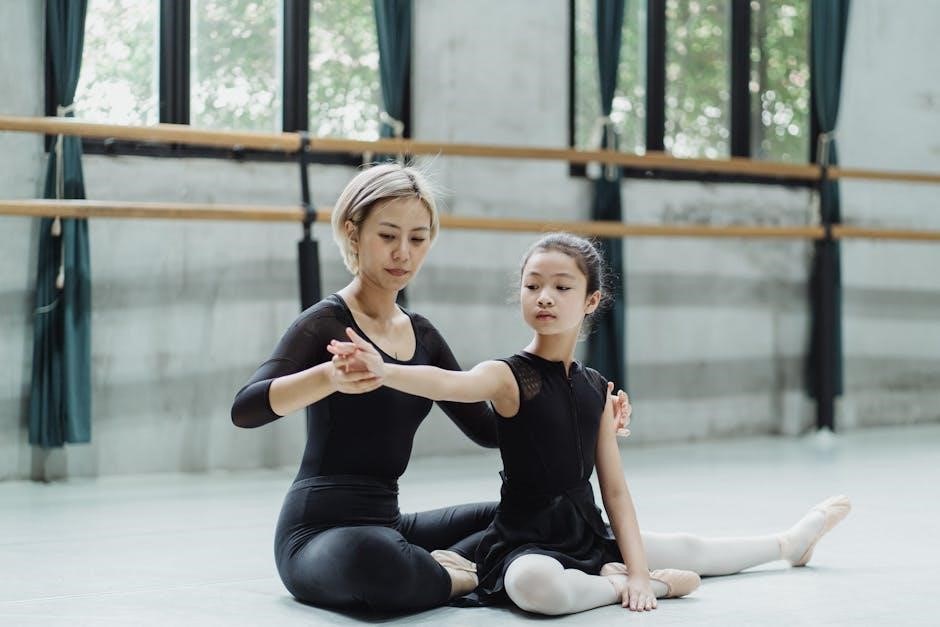an instruction for singers to all perform together
Singing together means performing as one unit‚ with
- all members
participating in harmony‚ creating a unified sound‚ using their voices to produce a beautiful melody‚ with each singer blending in perfectly‚ every time.
Definition of Tutti
The term Tutti refers to an instruction for singers to all perform together‚ creating a unified sound. This Italian word means all or together‚ indicating that every member of the ensemble should participate. In music‚ Tutti is used to signify a passage where the entire orchestra or choir sings or plays together‚ producing a rich and full sound. The definition of Tutti is closely related to its use in musical notation‚ where it is often marked as a direction to the performers. According to historical records‚ the term Tutti has been used in music for centuries‚ originating from the Italian language. In modern music‚ Tutti is still widely used to bring all performers together‚ creating a sense of unity and harmony. The use of Tutti adds depth and complexity to musical compositions‚ making it a fundamental element in various genres of music. Tutti is an essential concept in music theory‚ and its definition is crucial for understanding musical notation and performance practices.
Importance of Tutti in Music
The importance of Tutti in music lies in its ability to create a sense of unity and cohesion among performers. By bringing all singers or instrumentalists together‚ Tutti adds depth and complexity to musical compositions. This instruction is crucial in creating a balanced sound‚ where every performer contributes to the overall harmony. In musical performances‚ Tutti is often used to create dramatic effects‚ such as climaxes or grand finales. The use of Tutti also allows composers to showcase the full range of their ensemble‚ demonstrating the capabilities of each performer. Furthermore‚ Tutti provides an opportunity for musicians to come together‚ creating a sense of camaraderie and shared purpose. In addition‚ the importance of Tutti is evident in its ability to evoke emotions and convey the intended message of the music. By understanding the significance of Tutti‚ musicians and composers can create more effective and engaging musical experiences. Tutti plays a vital role in shaping the sound and structure of music;

Preparing for a Tutti Performance
Preparation involves
- rehearsals
and coordination to ensure a unified sound‚ with all singers performing together in harmony‚ every time‚ with precise timing and pitch‚ using their voices.
Rehearsal Techniques
Effective rehearsal techniques are crucial for a successful tutti performance‚ where all singers perform together in harmony. A key technique is to start with
- sectional rehearsals
‚ where each section of the choir rehearses separately to master their parts. The conductor can then bring the entire choir together for
- full rehearsals
‚ where the focus is on blending the different sections and creating a unified sound. Additionally‚
recording rehearsals
can be helpful‚ allowing singers to listen back and identify areas for improvement. By using these techniques‚ choirs can ensure that all singers are well-prepared and able to perform together seamlessly‚ creating a beautiful and cohesive sound. With practice and dedication‚ the choir can develop a strong sense of unity and musicality‚ essential for a compelling tutti performance. The rehearsal process is an essential part of the journey towards a successful performance.
Communication is Key
Clear communication is essential for a successful tutti performance‚ where all singers perform together in harmony. The conductor plays a vital role in communicating the desired sound and interpretation to the choir‚ ensuring that all singers are on the same page. This can be achieved through
- verbal instructions
‚
- demonstrations
‚ and
visual cues
‚ such as hand gestures and facial expressions. Effective communication also involves
active listening
‚ where singers pay attention to the conductor’s instructions and feedback‚ and adjust their performance accordingly. By fostering an open and collaborative environment‚ the conductor can encourage singers to share their thoughts and ideas‚ leading to a more cohesive and polished performance. Good communication helps to prevent errors and ensures that all singers are working towards a common goal‚ resulting in a unified and powerful sound. Proper communication is the foundation of a successful tutti performance.

Conducting a Tutti Performance
Conductors lead the ensemble with clear gestures and precise movements‚ guiding singers to perform together in perfect harmony every time always.
Conductor’s Role
The conductor plays a crucial role in a tutti performance‚ as they are responsible for guiding the ensemble and ensuring that all singers are performing together in harmony. This involves clear communication and precise gestures to convey the desired tempo‚ dynamics‚ and expression. The conductor must also be able to interpret the music and convey their vision to the singers‚ while also being sensitive to the needs and abilities of the individual performers. A good conductor is able to bring out the best in the ensemble‚ creating a unified and cohesive sound that is greater than the sum of its individual parts. By providing strong leadership and guidance‚ the conductor can help the singers to come together and perform as one unit‚ creating a truly memorable and impactful performance. The conductor’s role is multifaceted and demanding‚ requiring a deep understanding of music‚ performance‚ and leadership.
Signals and Cueing
The use of signals and cueing is essential in a tutti performance‚ as it allows the conductor to communicate effectively with the singers and ensure that everyone is performing together in harmony. This can be achieved through a range of techniques‚ including hand gestures‚ facial expressions‚ and body language. The conductor may also use verbal cues to provide additional guidance and support to the singers. By using a combination of these techniques‚ the conductor can provide clear and concise signals to the singers‚ helping them to stay together and perform with precision and accuracy. Effective signal and cueing is critical to the success of a tutti performance‚ and requires a great deal of practice and rehearsal to master. With clear and consistent signals‚ the singers can come together to create a unified and powerful sound. The conductor’s signals and cues help to shape the performance and bring out the best in the singers;

Types of Tutti Performances
Orchestral and choral performances are two main types‚ featuring large groups of singers and musicians performing together in harmony always.

Orchestral Tutti
An orchestral tutti refers to a section of music where the entire orchestra plays together‚ creating a rich and full sound. This can be a dramatic and exciting moment in a musical piece‚ as all the different instruments come together to produce a unified sound. In an orchestral tutti‚ the various sections of the orchestra‚ such as the strings‚ woodwinds‚ and brass‚ all play their parts simultaneously‚ blending their unique timbres and textures to create a cohesive whole. The result is a sound that is greater than the sum of its individual parts‚ with each instrument adding its own unique voice to the overall sound. The orchestral tutti is often used to great effect in classical music‚ and is a hallmark of many famous orchestral works‚ with its use of musical notation and instrumental technique to convey emotion and drama.
Choral Tutti
A choral tutti is a musical term that refers to a section of a piece where the entire choir sings together‚ creating a powerful and unified sound. This can be a thrilling moment in a choral performance‚ as all the different voices come together to produce a rich and full sound. In a choral tutti‚ the various sections of the choir‚ such as the sopranos‚ altos‚ tenors‚ and basses‚ all sing their parts simultaneously‚ blending their unique timbres and textures to create a cohesive whole. The result is a sound that is greater than the sum of its individual parts‚ with each voice adding its own unique character to the overall sound‚ using harmonic and melodic elements to convey emotion and drama‚ and is often used in choral music to great effect‚ creating a sense of unity and shared expression among the singers. The choral tutti is a key element of many famous choral works.
